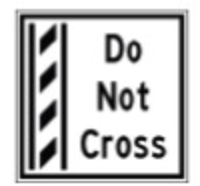The Signs - Handbook
- Traffic signs give you important information about the law, warn you about dangerous conditions and help you find your way. Signs use different symbols, colours and shapes for easy identification.
- >> Here are some of the many signs you will see on Ontario roads:
- >> A stop sign is eight-sided and has a red background and white letters. It means you must come to a complete stop. Stop at the stop line if it is marked on the pavement. If there is no stop line, stop at the crosswalk. If there is no crosswalk, stop at the edge of the sidewalk. If there is no sidewalk, stop at the edge of the intersection. Wait until the way is clear before entering the intersection.
-

- >> A school zone sign is five-sided and has a fluorescent yellow/green background with black symbols. It warns that you are coming to a school zone. Slow down, drive with extra caution and watch for children.
-

- A yield sign is a triangle with a white background and a red border. It means you must let traffic in the intersection or close to it go first. Stop if necessary and go only when the way is clear.
-
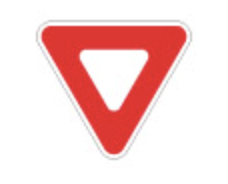
- A railway crossing sign is X-shaped with a white background and red outline. It warns that railway tracks cross the road. Watch for this sign. Slow down and look both ways for trains. Be prepared to stop.
-

- Regulatory signs
- These signs give a direction that must be obeyed. They are usually rectangular or square with a white or black background and black, white or coloured letters. A sign with a green circle means you may or must do the activity shown inside the ring. A red circle with a line through it means the activity shown is not allowed.
Here are some common regulatory signs: - This road is an official bicycle route. Watch for cyclists and be prepared to share the road with them.

- You may park in the area between the signs during the times posted. (Used in pairs or groups.)

- Snowmobiles may use this road.

- Do not enter this road.

- Do not stop in the area between the signs. This means you may not stop your vehicle in this area, even for a moment. (Used in pairs or groups.)

- Do not stand in the area between the signs. This means you may not stop your vehicle in this area except while loading or unloading passengers. (Used in pairs or groups.)

- Do not park in the area between the signs. This means you may not stop your vehicle except to load or unload passengers or merchandise. (Used in pairs or groups.)
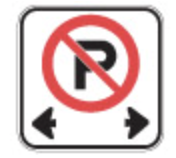
- Do not turn left at the intersection.

Do not drive through the intersection.
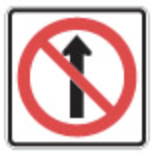
Do not turn to go in the opposite direction. (U-turn)

Do not turn right when facing a red light at the intersection.

Do not turn left during the times shown.
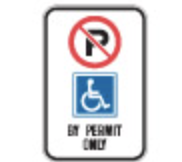
- No bicycles allowed on this road.

- No pedestrians allowed on this road.

- Keep to the right of the traffic island.
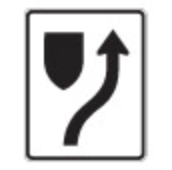
- Speed limit changes ahead.
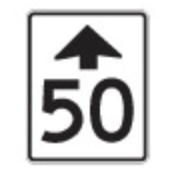
- Slow traffic on multi-lane roads must keep right.
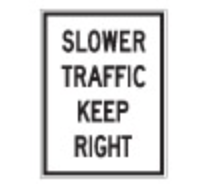
- Indicates areas where the community has identified that there is a special risk to pedestrians. Traffic related offences committed within the zone are subject to increased fines.

- The speed limit in this zone is lower during school hours. Observe the speed limit shown when the yellow lights are flashing.
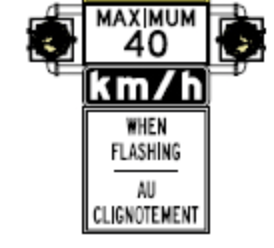
- These signs, above the road or on the pavement before an intersection, tell drivers the direction they must travel. For example: the driver in lane one must turn left; the driver in lane two must turn left or go straight ahead; and the driver in lane three must turn right.
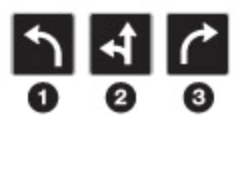
- Traffic may travel in one direction only.
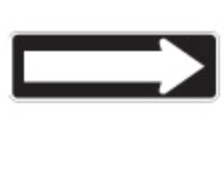
- This is a pedestrian crossover. Be prepared to stop and yield right-of-way to pedestrians.

- This sign, above the road or on the ground, means the lane is only for two-way left turns.
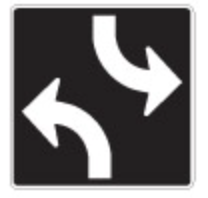
- This sign reserves curb area for vehicles displaying a valid Accessible Person Parking Permit picking up and dropping off passengers with disabilities.

- These signs mean lanes are only for specific types of vehicles, either all the time or during certain hours. Different symbols are used for the different types of vehicles. They include: buses, taxis, vehicles with three or more people and bicycles.
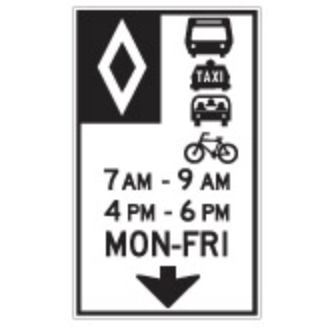
- Keep to the right lane except when passing on two-lane sections where climbing or passing lanes are provided.
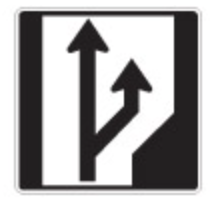
- Stop for school bus when signals are flashing.
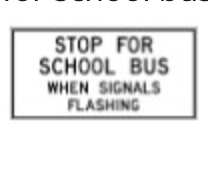
- This sign is installed on multi-lane highways with no centre median divider. It informs drivers approaching from both directions that they must stop for a school bus when its signal lights are flashing.
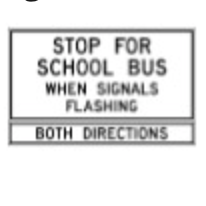
- No trucks in this lane.
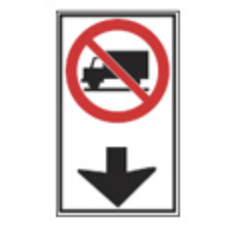
- No trucks over 6.5 metres in length in indicated lane.
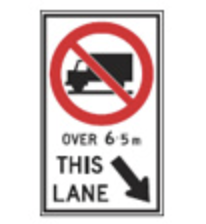
- No trucks over 6.5 metres in length in this lane.
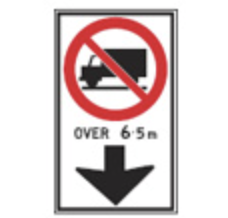
- Heavy trucks permitted on this roadway.

- Road forks to the right.

- No heavy trucks permitted on this roadway.
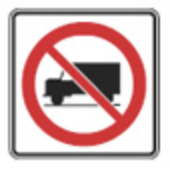
- No heavy trucks permitted on this roadway between the hours of 7 p.m. – 7 a.m.

- No vehicles over 10 tonnes on this roadway.
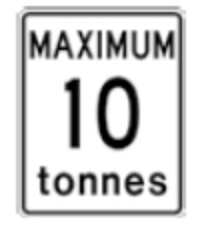
- No vehicles that bear more than five tonnes per axle permitted on this roadway.

- Indicates different weight restrictions for different types of heavy trucks for a bridge structure.
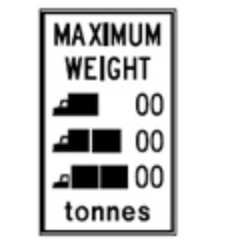
- Trucks carrying dangerous goods permitted on this roadway.

- Trucks carrying dangerous goods permitted on this roadway.(Both the signs are valid)
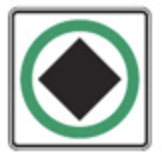
- Trucks carrying dangerous goods are not permitted on this roadway.
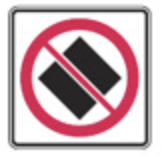
- No vehicles containing hazardous materials permitted on this roadway.

- Marks a zone within which school buses load or unload passengers without using the red alternating lights and stop arm.
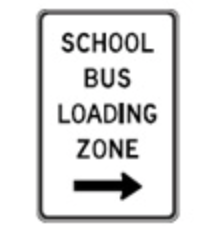
- Trucks must enter inspection station when signals are flashing.
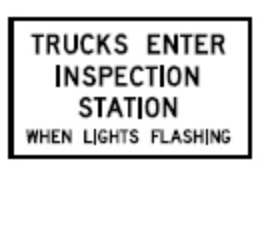
- Any trucks over five tonnes must have a valid 407 transponder to use ETR.
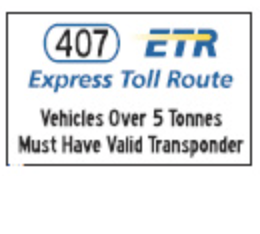
- This sign on the back of transit buses serves as a reminder to motorists of the law requiring vehicles approaching a bus stopped at a dedicated Bus Stop to yield to the bus, once the bus has signalled its intent to return to the lane.
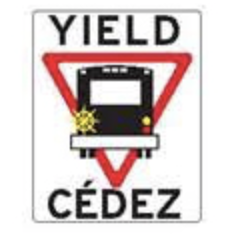
- ~~High Occupancy Vehicle (HOV) signs~~
Only public vehicles such as buses, or passenger vehicles carrying a specified minimum number of passengers, may use this lane.
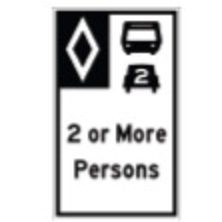
- Vehicles cannot change lanes into or out of a high-occupancy vehicle lane in this area.
